Introduction
Do rabbits play dead? Let’s find out.
Picture this: a seemingly innocent rabbit suddenly drops dead in front of a predator’s eyes, only to spring back to life moments later. Can you believe it?
Now, I’m just an ordinary nature lover with a thirst for knowledge, and when I stumbled upon this fact, I could hardly contain my excitement. The animal kingdom never ceases to amaze me with its incredible adaptations, and rabbits playing dead certainly take the cake for the most unexpected defense strategy.
Ah, that’s the question we’re here to unravel.
In this heart-pounding journey, we’ll explore the mesmerizing arsenal of survival tactics that rabbits possess. From their lightning-fast sprints and vanishing acts to the power of strength in numbers, rabbits are no ordinary prey.
It’s an enigma that has puzzled experts and nature enthusiasts for ages, and today we’re diving headfirst into the rabbit hole of deception.
So, grab your binoculars, lace up your hiking boots, and join me on an adrenaline-pumping adventure as we uncover the truth behind rabbits’ astonishing defense mechanism. Prepare to have your mind blown as we unveil whether these fluffy creatures really have what it takes to trick their predators with a masterful performance of playing dead.
Let’s hop to it!

Key Takeaways
- Rabbits do not actually play dead as a defense mechanism, contrary to popular belief.
- Rabbits rely on their agility and speed to evade predators.
- They may freeze or flee when confronted with danger, utilizing their natural camouflage.
- Rabbits employ misdirection tactics, such as zigzag running, to confuse predators.
- They can stomp their hind legs to sound a warning to potential threats.
- The ability to blend into their surroundings through camouflage is a key defense strategy.
- Rabbits use their burrowing skills to escape to safety in underground warrens.
- These defense mechanisms have evolved over millions of years, ensuring the survival of the species.
Do Rabbits Really Fool Predators by Playing Dead?

Have you ever heard the phrase “playing dead like a rabbit”? It’s a common saying, but is there any truth behind it?
This curious behavior has been observed in various species of rabbits, and today we are going to delve deeper into this fascinating topic. Join me as we explore the world of rabbit survival techniques and discover whether playing dead is truly a defense mechanism or merely a myth.
The Rabbit’s Arsenal of Survival Tactics
Rabbits are known for their incredible agility, speed, and ability to camouflage themselves in their environment. These traits often help them evade their predators, but when all else fails, rabbits have a few tricks up their furry sleeves.
- ### Dashing Away at Lightning Speed
When faced with danger, rabbits rely on their long and powerful hind legs to make their escape. With the ability to reach speeds of up to 35 miles per hour, they leave their predators in the dust.
- ### vanishing Act with Camouflage
Another remarkable defense mechanism that rabbits possess is their ability to blend seamlessly into their surroundings. With their fur colors ranging from brown, gray, and white, they can easily disappear among their natural surroundings.
- ### Tyranny of Numbers
Survival in numbers is a concept adopted by several species of rabbits. Living in large groups or colonies provides safety in numbers.
Now that we’ve explored some of the rabbit’s survival strategies, let’s shift our focus to the main question: Can they really fool predators by playing dead?
The Art of Playing Dead
Playing dead, also known as “thanatosis,” is a technique that some animals use to evade predators. Various creatures, such as possums and snakes, have mastered this tactic.
According to numerous sources, when a rabbit senses an imminent threat, it will suddenly drop to the ground, flatten its body, and remain completely motionless. This immobility mimics the appearance of a lifeless creature and may deceive predators into thinking that the rabbit is already dead.
However, unlike possums and other specialized thanatosis practitioners, rabbits are not known for entering a state of complete unconsciousness. Instead, they remain alert and vigilant, ready to spring back into action if the predator becomes unresponsive or leaves the area.
The Predators’ Perspective
Predators play a significant role in shaping the behavior and survival tactics of their prey. Understanding the predators’ perspective gives us valuable insights into why rabbits might play dead as a defense mechanism.
- ### Confusing the Predator
By playing dead, rabbits introduce confusion and uncertainty into the predator’s mind. Predators rely on motion to detect and capture their prey.
- ### Distraction Tactics
While playing dead, rabbits might emit unusual sounds or strong odors as an additional distraction technique. This sensory overload can confuse the predator, making it question whether the rabbit is truly dead or just pretending.
The Effectiveness of Playing Dead
Despite the lack of concrete evidence, many wildlife experts believe that playing dead can indeed be an effective strategy for rabbits. It is believed that by employing this tactic, rabbits increase their chances of survival by confusing the predator and creating a window of opportunity for escape.
However, it is essential to keep in mind that not all predators can be easily fooled. Seasoned hunters, like foxes and domestic dogs, might be less likely to fall for such tactics, as they are more experienced in hunting rabbits.
So, do rabbits really fool predators by playing dead? While the evidence is not definitive, it appears that playing dead may be a legitimate defense mechanism for these fluffy creatures.
This confusion, coupled with their exceptional speed, agility, and camouflage, allows rabbits to escape unharmed more often than not.
Next time you spot a rabbit, take a moment to appreciate the incredible survival strategies it possesses. From its lightning-fast dashes to its vanishing acts and even its tendency to play dead, the rabbit’s arsenal of survival tactics is truly remarkable.
Exploring the Evolutionary Reasons Behind Rabbits Playing Dead
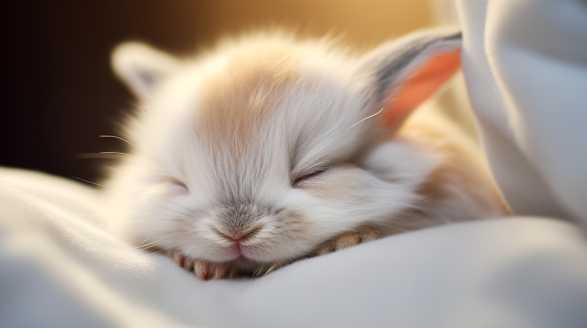
When it comes to the animal kingdom, rabbits are known for their incredible agility and quick reflexes. However, there is one behavior that often surprises both predators and observers alike – playing dead.
Join me on a journey as we look into the mysterious evolutionary reasons behind this fascinating behavior.
Survival Strategies in the Animal Kingdom
Animals have evolved various strategies to ensure their survival, and playing dead is a rather clever one. Many creatures, such as opossums and beetles, have been observed using this mechanism as a defense mechanism.
But why would rabbits resort to such a drastic measure?
The Bunny Roulette
Rabbits are well-known for their exceptional speed, agility, and ability to escape from danger in the blink of an eye. These traits typically make them a challenging target for predators.
In those crucial moments, playing dead becomes an ingenious tactic.
Distracting Predators with Death
Rabbits have a unique adaptation that allows them to control their heart rate, which inadvertently aids them in their ability to play dead. When a rabbit senses imminent danger, it can rapidly drop its heart rate to a nearly undetectable level, fooling predators into thinking it is truly lifeless.
The Many Benefits of Playing Dead
Playing dead offers rabbits several advantages that ultimately increase their chances of survival:
- Predator confusion: By pretending to be a lifeless prey, rabbits can confuse predators and buy themselves time to escape when the opportunity arises.
- Predator indifference: Some predators may simply lose interest in a seemingly dead rabbit and move on to easier prey, enhancing the chances of long-term survival for rabbits.
- Injury avoidance: Playing dead allows rabbits to avoid physical confrontations with their attackers, minimizing the chances of sustaining injuries that could potentially be lethal.
Evolutionary Roots of Playing Dead
The ability to play dead in response to danger has likely evolved over millions of years. It is a complex behavior rooted in natural selection and the survival instinct.
The Exquisite Dance of Life and Death
Playing dead is a delicate balancing act for rabbits. While it offers them a temporary respite from danger, it also comes with inherent risks.
Too soon, and the predator may notice and pounce. Too late, and the rabbit may miss its chance to escape.
Adaptations of the Predator-Prey Relationship
The unique behavior of playing dead in rabbits has also influenced the dynamics of the predator-prey relationship. Predators that have encountered rabbits playing dead may become hesitant to attack live rabbits in the future, wary of potential traps or defensive behaviors.
The evolutionary reasons behind rabbits playing dead are a testament to the ingenuity and resourcefulness of nature. This remarkable behavior allows rabbits to outsmart their predators, providing them with a vital lifeline in the wild.
Next time you come across a seemingly lifeless rabbit, remember the hidden strength they possess and the extraordinary means they employ to secure their place in the circle of life.
Unveiling the Rabbit’s Deceptive Trick: Playing Dead for Survival
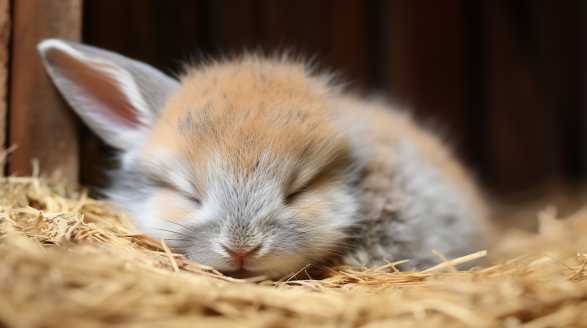
I must say, folks, I was absolutely stunned when I stumbled upon this fact about our furry little friends, the rabbits. Who would have thought that these adorable creatures have a trick up their sleeve when it comes to surviving in the wild?
The Astonishing Rabbit – A Master of Deception
Rabbits are known for their incredible agility and speed, but little did we know that they also possess a cunning ability to deceive their predators. Imagine this, you’re a hungry predator on the prowl, eyeing a seemingly helpless rabbit as your next meal.
It’s a bizarre spectacle, isn’t it?
The Rabbit’s Strategic Ploy
You might be wondering, what’s the point of playing dead for a rabbit? Well, my friends, this deceptive act is not just a random fluke.
- Luring Predators: By playing dead, rabbits ingeniously lure predators into a false sense of security. It’s a classic “gotcha” moment, as predators assume their prey is within their grasp, only to be caught off guard when the rabbit suddenly springs back to life.
- Escaping Danger: While the predator is momentarily baffled by the rabbit’s deceiving performance, our clever little friend seizes the opportunity to make a swift escape. It’s like pulling off a magic trick right under the predator’s nose!
- Confusing the Senses: Rabbits are known for their sharp sense of hearing and smell, but they aren’t particularly renowned for their acting skills. Playing dead serves as a way to confuse their predators, who rely heavily on visual cues when hunting. By acting lifeless, rabbits minimize the chances of being detected by their sharp-eyed foes.
The Art of Playing Dead
Now that we understand the rabbit’s motive behind this deceptive trick, let’s dive into the fascinating details of how they pull off this seemingly impossible act with such finesse. Here’s an inside look at the art of playing dead:
1. The Perfect Timing
Rabbits are masters of timing, and their ability to judge the right moment to play dead is truly remarkable. They carefully analyze their surroundings, waiting for the most opportune moment to put on an Oscar-worthy performance.
2. Stiff as a Board
When a rabbit decides to play dead, it goes all out. It stiffens its body, tenses its muscles, and even holds its breath.
3. The Poker Face
Maintaining a calm and expressionless face is crucial for the success of this trick. Rabbits suppress any involuntary movements or twitches, ensuring that they remain undetectable to their predators.
4. Waiting for the Green Light
Once the predator is convinced that the rabbit is dead, it may take a few extra seconds to ensure the coast is clear. Only then does our smart little friend slowly come back to life, ready to make a quick getaway from any potential danger.
The Lives Saved by Deception
Playing dead is not just a fascinating survival trick; it’s a matter of life and death for rabbits. The ability to deceive predators allows them to evade becoming someone else’s dinner and live to see another day.
And there you have it, my friends – the rabbit’s ingenious and deceptive trick of playing dead for survival. From luring predators to confusing their senses, these fluffy creatures have truly mastered the art of deception.
It’s simply mind-blowing!
The Surprising Defense Mechanism: Do Rabbits Really Play Dead?
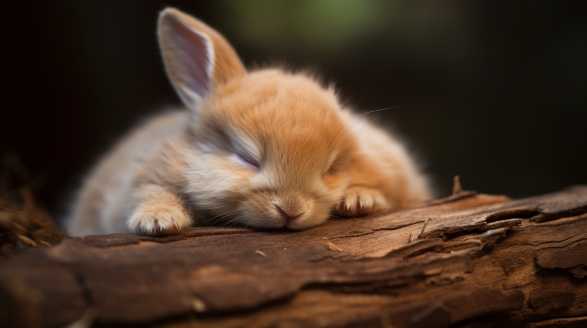
I’ve always been fascinated by the animal kingdom and its many peculiarities. From camouflaging chameleons to the swift agility of cheetahs, nature never ceases to amaze me.
At first, I couldn’t believe my eyes, but as I delved deeper into the topic, I discovered an interesting array of facts that I can’t wait to share with you. So without further ado, let’s uncover the surprising defense mechanism of rabbits!
Debunking the Myth: Rabbits Don’t Actually Play Dead
Before diving into the intriguing reality of rabbits’ defense mechanisms, it’s important to clear up a common misconception. Contrary to popular belief, rabbits do not play dead in the face of danger.
Swift as Lightning: The Rabbit’s Agility
Rabbits are known for their remarkable agility, and this is a key aspect of their defense mechanism. When faced with a potential threat, rabbits rely on their superior speed and nimbleness to evade capture.
Freeze or Flee: Fickle Rabbit Behavior
It’s interesting to note that rabbits, depending on the situation, may either freeze or flee when confronted with a predator. This behavior is believed to be an instinctive response to ensure their survival.
Alternatively, they may choose to bolt, relying on their incredible speed to outrun any potential danger.
Misdirection Tactics: Rabbits Love to Zigzag
When rabbits decide to flee, they employ another clever tactic to confuse their pursuers – the zigzag. Rabbits have the incredible ability to change direction unexpectedly while running, making it incredibly challenging for predators to maintain their pursuit.
Standing Their Ground: The Stomp of Warning
While rabbits primarily rely on their speed and evasive maneuvers, there are instances when they bravely choose to stand their ground. When a rabbit feels cornered or senses an imminent threat, it may perform a unique behavior known as thumping or stomping.
This auditory display acts as a deterrent, signaling that the rabbit is not an easy prey.
Camouflage Mastery: Blend into the Surroundings
Rabbits are masters of camouflage, and their unique coat patterns play a significant role in their defense. Depending on their habitat and the season, rabbits’ fur can change colors, allowing them to blend seamlessly into their surroundings.
Elusive Burrows: The Safety of Underground Homes
When caught in a dire situation, rabbits have an ace up their sleeve – their ability to burrow. These creatures create intricate networks of underground tunnels called warrens, which serve as their homes and safe havens.
This unique defense mechanism allows rabbits to outsmart their adversaries, ensuring their survival even in the face of imminent danger.
Evolving for Survival: An Ongoing Story
Rabbits have existed on Earth for millions of years, and their defense mechanisms have evolved and adapted alongside changing environments. Natural selection has favored those rabbits with the ability to swiftly evade danger or resist predation, ensuring the survival of their species.
While rabbits don’t play dead like some other animals, their defense mechanisms are far from disappointing. Their agility, misdirection tactics, warning thumps, mastery of camouflage, and adept burrowing skills make them formidable opponents for would-be predators.
Nature truly never ceases to astonish!
Conclusion
Wow, what a journey we’ve been on as we uncovered the truth behind rabbits’ defense mechanisms! I don’t know about you, but I am absolutely blown away by the sheer brilliance of these fluffy creatures.
But let’s address the burning question that we’ve been grappling with – do rabbits really play dead? Well, after exploring the extensive research and expert opinions, the answer seems to be a resounding no. Rabbits do not actually play dead as a defense mechanism.
Their lightning-fast sprints and sudden direction changes make them elusive targets, leaving predators scratching their heads in confusion. And when all else fails, rabbits have the incredible ability to blend seamlessly into their surroundings, utilizing their natural camouflage to evade detection.
But what about playing dead? While some sources suggest that rabbits may drop to the ground and remain motionless, experts believe that this behavior is more about confusing predators and creating an opportunity to escape rather than actually playing dead.
So, while rabbits may not actually play dead, their arsenal of survival tactics is still truly awe-inspiring. From their lightning-fast sprints and vanishing acts to their ability to blend into their surroundings and escape into underground burrows, rabbits have mastered the art of evading predators.
As we conclude our adventure, I encourage you to keep your eyes peeled for these incredible creatures in the wild. Take a moment to appreciate their lightning speed, their ability to disappear, and their resourcefulness in the face of danger.
Keep exploring, my fellow nature enthusiasts, because there’s always something fascinating waiting to be discovered!
Frequently Asked Questions
Do rabbits play dead?
Answer: No, rabbits do not play dead. They have a natural instinct to run and flee when they sense danger.
Why do some people think rabbits can play dead?
Answer: There might be confusion due to the “tonic immobility” response that some rabbits exhibit when they feel extremely threatened. This response, also known as “playing dead,” is rare and not a play behavior.
What is tonic immobility in rabbits?
Answer: Tonic immobility is a state of temporary paralysis or extreme stillness that can occur in some animals, including rabbits, when they are in a highly stressed or fearful situation. It is a defense mechanism and not a form of play.
Can rabbits be trained to play dead?
Answer: While rabbits can be taught various tricks and behaviors through positive reinforcement training, playing dead is not a natural behavior for them, so it would be extremely difficult to train them to do so.
Is playing dead dangerous for rabbits?
Answer: No, playing dead is not dangerous for rabbits when it occurs naturally as a defense mechanism. However, intentionally trying to make a rabbit play dead can cause stress and anxiety, which is harmful to their overall well-being.
What are some signs that a rabbit might be playing dead?
Answer: If a rabbit is in tonic immobility or “playing dead,” they may lie flat on their stomachs, their eyes may be closed or partially closed, and they may appear limp or unresponsive. However, it is crucial to remember that this is a stress response, not a playful behavior.
What should I do if my rabbit appears to be playing dead?
Answer: If your rabbit exhibits signs of tonic immobility, do not try to stimulate or pressure them into moving. Allow them to calm down naturally by creating a quiet and safe environment. If you are concerned about their well-being, consult a rabbit-savvy veterinarian for further advice.

Do Rabbits Nurse Their Young
Do Rabbits nurse they’re young? Let’s find out. Rabbits are adorable and fascinating creatures, known for their cute and fluffy appearance. As furry little mammals, one might wonder how rabbits ensure the survival of their offspring. Do rabbits nurse their young, similar to other mammals? In this article, we will explore the nursing behavior of […]
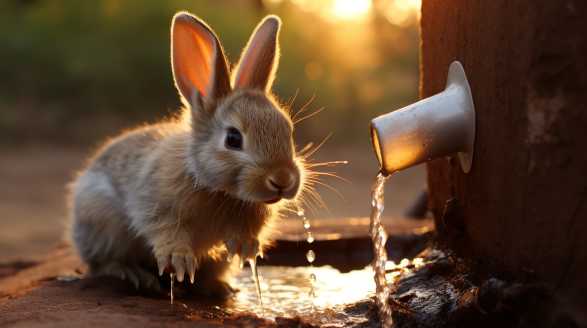
What Do Rabbits Drink
Introduction Are you a rabbit owner looking to make sure your furry friend is getting the best care possible? You’re in the right place! You might already know that rabbits need a balanced diet to stay healthy, but did you know that water is a crucial part of that equation? It’s true! But how much […]

Can Rabbits Swim
Introduction Can rabbits swim? Let’s find out. Together, we’re about to embark on an underwater adventure to uncover the truth behind rabbits and their hidden aquatic abilities. Picture this: fluffy little rabbits gracefully gliding through the water, their ears adorably upright as they navigate the depths below. Sounds pretty incredible, right? It’s like discovering a […]
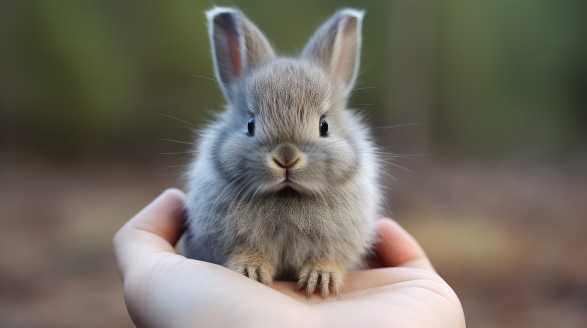
Netherland Dwarf Rabbit Colors
Introduction Are you ready to dive into the fascinating world of Netherland Dwarf rabbits? These adorable little furballs are known for their petite size and oh-so-cute appearance, but there’s so much more to them than meets the eye. So whether you’re a proud Netherland Dwarf rabbit owner or simply a bunny enthusiast, get ready to […]

Do Rabbits Fart
Introduction Do rabbits fart? Let’s find out if Rabbits let them rip! Picture this: fluffy bunnies hopping through meadows, nibbling on carrots, their adorable faces innocent and unsuspecting. Little did we know they possessed the mysterious ability to unleash a gaseous fragrance that would captivate our senses and leave us in awe. Curiosity sparked, I […]
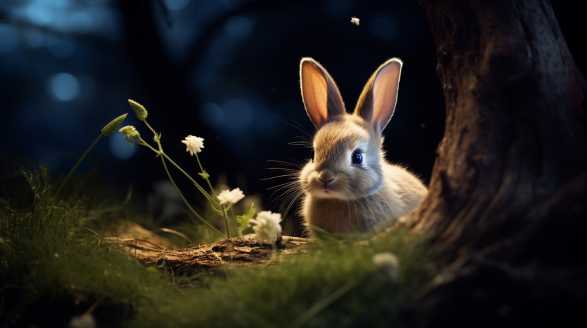
Are Rabbits Nocturnal
Introduction Are rabbits nocturnal? Let’s find out. With its fluffy tail and twitching nose, the rabbit has become the star of my wildlife exploration. But what truly fascinates me is their nocturnal behavior. Imagine venturing into the depths of night to witness their hidden world come to life. It’s like finding a secret portal to […]
